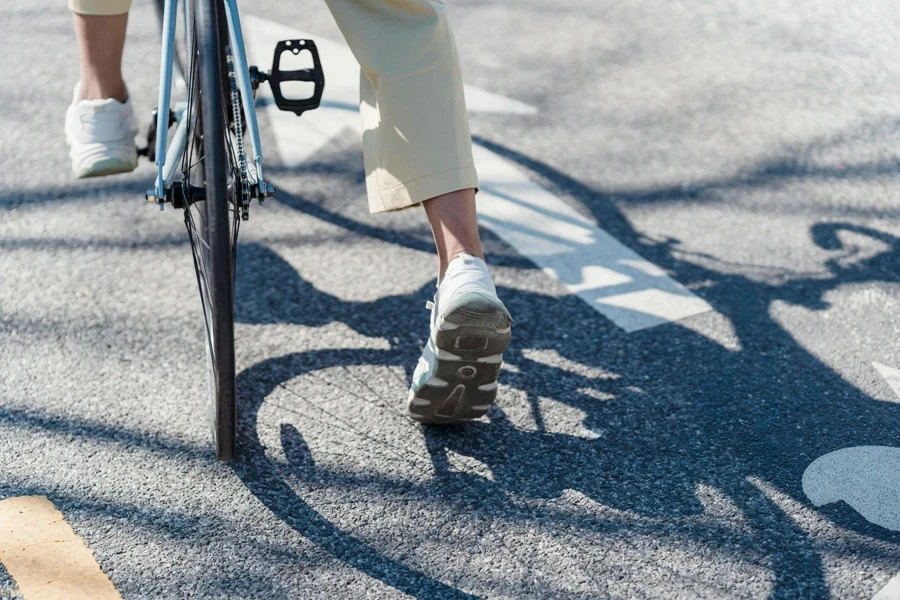Table of Contents
● Introduction
● Market Overview
● Different Types and Their Features
● Things to Consider When Selecting Products
● Conclusion
Introduction
Investing in good cycling shoes is essential for cyclists as they provide performance, safety, and increased comfort levels compared to regular shoes or sneakers. These specialized shoes are designed to maximize power transfer and ensure stability based on the requirements of cycling styles or disciplines. Thanks to advancements in using materials and ergonomic designs in their construction process, these shoes help improve efficiency and decrease the chances of getting injured while cycling. The appropriate pair of cycling shoes can greatly enhance your biking adventures, whether you are into racing or enjoy leisurely rides around town. In a growing market scenario, it becomes crucial to grasp the characteristics and advantages of these footwear options to ensure well-informed decisions are made.
Market overview

The market of cycling shoes across the globe has been growing and was valued at around $ 1.22 billion in 2023, which is expected to reach around $ 1.28 billion by the end of year 2024. This market is projected to reach $1.78 by 2033 with a constant annual growth rate of 3.7%. The increase is attributed mostly to the uptrend in recreational cycling as well as competitive cycling activities.
The Asia Pacific has been forecasted to dominate the global cycling shoes market in the years between 2024 and 2030, attributed to increasing urbanization and big population of countries like China, Japan and India that has high potential for growth. According to Market Research Reports, both North America and Europe are also expected to have a large market because of their tradition of cycling and the increasing popularity of cycling sports. With an annual compounded growth rate of 3.7%, it clearly suggests that there is demand upswing in these areas owing to the given adoption of health consciousness and environment-friendly commutation.

Different types of cycling shoes and their features
Different cycling shoes are available to cater to the requirements of various cycling disciplines, such as mountain biking and road cycling.
MTB shoes
Off-road cycling shoes, also called mountain biking shoes or ‘MTBs’, are designed to stand up to off-road cycling; they consist of hard-wearing materials and reinforced soles for abrasive terrains. These models are equipped with more aggressive treads for increased grip to maintain balance when traversing surprise terrains and often have additional reinforcements such as reinforced caps protecting the foot from stones and other obstacles. Consumer love MTB shoes because of their ability to provide comfort during lengthy rides due to its shock-absorbing nature and good designs.
Road shoes
Cycling shoes for road biking are designed to boost performance by optimizing power transfer from the cyclist to the bike. These shoes are recognized for their stiff soles, usually constructed of carbon fiber to decrease energy wastage while pedaling. Additionally, these road shoes aim to be light in weight, which helps lessen strain during cycling sessions. According to Verified Market Reports, road cycling shoes commonly have a streamlined design and limited cushioning to improve aerodynamics. The fastening mechanisms, like BOAs or Velcro straps, guarantee a snug fit that keeps you efficient while cycling at high speeds.

Key features across types
Both mountain biking (MTB) and road cycling shoes have features that improve performance in various cycling activities. Cycling shoes must have ventilation to keep the feet cool and dry during intense rides; many models use breathable materials and mesh panels. Another important aspect is moisture management, which helps avoid blisters and discomfort. Compatibility is vital, allowing the shoes to connect to clipless pedal systems for better control and stability. Based on information from sources in the industry, cycling shoes are made using a variety of materials like synthetic leather or advanced composites that greatly impact the overall performance and comfort of the shoes while also affecting their durability. These characteristics are tailored to cater to the requirements of cyclists who may be riding through challenging terrains or participating in races along well-paved roads
Things to consider when selecting cycling shoes
Choosing a pair of cycling shoes is essential for enhancing comfort and boosting ride performance. There are plenty of choices, so it’s crucial to grasp the important elements that can impact your decision-making process. This segment delves into factors such as getting a comfortable fit that suits you well and addressing your performance requirements. It also touches on incorporating cutting-edge technologies and aligning with eco practices to stay with current trends.
Fit and comfort
When picking out cycling shoes, it is key to ensure they fit well and provide comfort. Getting the right size is important to avoid discomfort or injuries while riding, especially during longer trips. Cycling shoes with elements like ratchet buckles, Velcro straps, or BOA dials offer a personalized fit that caters to different foot shapes and preferences. Trek Bikes suggests an ergonomic design supporting the foot’s shape can help reduce pressure points and enhance overall comfort. This prevents tingling sensations or sore spots during prolonged bike rides.

Performance needs
When selecting cycling shoes for your rides, the choice largely hinges upon the specific cycling activity you are engaged in. For road biking enthusiasts, opting for shoes equipped with stiff soles is crucial to enhance power transfer efficiency, ensuring that each push of the pedal propels you forward. Conversely, if you’re into mountain biking adventures, you’d want shoes that boast a robust design to provide superior protection and traction across rough terrains. According to REIs Insights, mountain biking shoes typically come with treaded soles that offer grip when walking off the bike. Road shoes use light materials and sleek designs to improve speed and efficiency while cycling effectively. Aligning your goals with the right shoe type is crucial for enhancing performance on the road.
Technology and innovation
Cycling footwear in today’s age incorporates cutting-edge technologies to significantly boost performance and comfort levels. High-end designs now have features that can track metrics like cadence and power output right from the shoe itself. BikeExchange mentions that carbon fiber is commonly employed in crafting lightweight soles that enhance power transfer and decrease tiredness. The increased availability of customizable features like heat moldable insoles and personalized fit modifications in shoes are now more widespread, enabling cyclists to personalize their footwear according to their requirements and preferences.
Sustainability
As consumers’ interest in eco-friendly products grows, cycling shoemakers are stepping up their game by embracing sustainable methods. They are turning to recycled materials and green manufacturing techniques to lessen their footprint, as pointed out by Future Market Insights. Certain brands also emphasize lasting products, which reduces the necessity for frequent replacements. This move towards sustainability aligns with environmental objectives and strikes a chord with shoppers who value ethical and environmentally aware buying choices.

Conclusion
Choosing appropriate cycling shoes is vital in ensuring comfort and optimal performance during rides. To make a purchase that elevates the biking experience to new heights, it is essential for cyclists to consider important aspects like fit, performance requirements, technological advancements, and eco-friendliness. The right fit and ergonomic structure are key to avoiding discomfort or injuries while selecting materials and designs that suit the demands of road cycling or mountain biking, which is crucial for a ride. By combining technologies and personalized features, the shoe design process enhances their fit to meet specific requirements and gives them a competitive advantage.
It’s important to keep up with market trends, such as the move towards using lightweight and durable materials in shoe production that are eco-friendly. Cycling is gaining fans every day, and these trends are shaping the industry. Being in the know will help cyclists find the perfect pair of shoes that match their needs and support sustainability and performance in the long run.




